Related Research Articles

Anzac Day is a national day of remembrance in Australia, New Zealand and Tonga that broadly commemorates all Australians and New Zealanders "who served and died in all wars, conflicts, and peacekeeping operations" and "the contribution and suffering of all those who have served". Observed on 25 April each year, Anzac Day was originally devised to honour the members of the Australian and New Zealand Army Corps (ANZAC) who served in the Gallipoli campaign, their first engagement in the First World War (1914–1918).

The Gallipoli campaign, the Dardanelles campaign, the Defence of Gallipoli or the Battle of Gallipoli was a military campaign in the First World War on the Gallipoli peninsula from 19 February 1915 to 9 January 1916. The Entente powers, Britain, France and the Russian Empire, sought to weaken the Ottoman Empire, one of the Central Powers, by taking control of the Ottoman straits. This would expose the Ottoman capital at Constantinople to bombardment by Entente battleships and cut it off from the Asian part of the empire. With the Ottoman Empire defeated, the Suez Canal would be safe and the Bosphorus and Dardanelles straits would be open to Entente supplies to the Black Sea and warm-water ports in Russia.

The Battle of Chunuk Bair was a World War I battle fought between the Ottoman defenders and troops of the British Empire over control of the peak in August 1915. The capture of Chunuk Bair,, the secondary peak of the Sari Bair range, was one of the two objectives of the Battle of Sari Bair.

The Australian and New Zealand Army Corps (ANZAC) was originally a First World War army corps of the Mediterranean Expeditionary Force. It was formed in Egypt in December 1914, and operated during the Gallipoli campaign. General William Birdwood commanded the corps, which primarily consisted of troops from the First Australian Imperial Force and 1st New Zealand Expeditionary Force, although there were also British and Indian units attached at times throughout the campaign. The corps disbanded in 1916, following the Allied evacuation of the Gallipoli peninsula and the formation of I ANZAC Corps and II ANZAC Corps. The corps was re-established, briefly, in the Second World War during the Battle of Greece in 1941. The term 'ANZAC' has been used since for joint Australian–New Zealand units of different sizes.
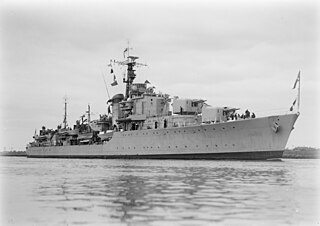
HMAS Anzac (D59) was a Battle-class destroyer of the Royal Australian Navy (RAN). Named after the Australian and New Zealand Army Corps, the destroyer was commissioned in 1951. The ship served on two tours of duty during the Korean War, and attempts to distinguish herself from British ships led to the practice of red kangaroo symbols on Australian warships. During 1956, Anzac served during the Malayan Emergency. In 1960, a malfunction in the destroyer's gun direction equipment caused Anzac to fire directly on sister ship HMAS Tobruk during a gunnery exercise, with Tobruk left unrepairable. In 1961, the destroyer was reclassified as a training vessel. Anzac remained in service until 1974, and was sold for breaking a year later.
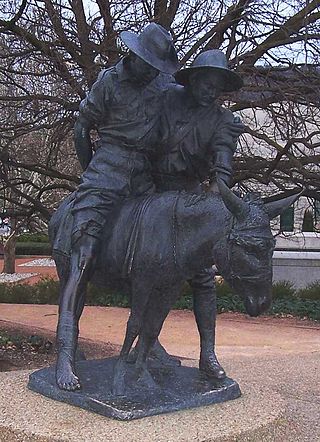
The Anzac spirit or Anzac legend is a concept which suggests that Australian and New Zealand soldiers possess shared characteristics, specifically the qualities those soldiers allegedly exemplified on the battlefields of World War I. These perceived qualities include endurance, courage, ingenuity, good humour, larrikinism, and mateship. According to this concept, the soldiers are perceived to have been innocent and fit, stoical and laconic, irreverent in the face of authority, naturally egalitarian, and disdainful of British class differences.

The bicentenary of Australia was celebrated in 1988. It marked 200 years since the arrival of the First Fleet of British convict ships at Sydney in 1788.
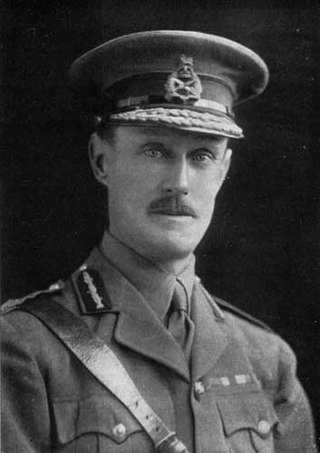
General Sir Alexander John Godley, was a senior British Army officer. He is best known for his role as commander of the New Zealand Expeditionary Force and II Anzac Corps during the First World War.
Mat McLachlan is an Australian author, historian and television presenter. His first book, Walking With the Anzacs: A Guide to Australian Battlefields on the Western Front, was published by Hachette Australia in February 2007. It was reprinted in 2008, 2009, 2011, 2012, 2013 and 2014. A fully revised edition was published in 2015.

Christopher John Pugsley is a New Zealand military historian. He is published as Chris Pugsley and Christopher Pugsley.

Tradewind is a Dutch topsail schooner. She was built in the Netherlands in 1911 as a herring lugger named Sophie Theresia.

Foreign relations exist between the Commonwealth of Australia and the Republic of Turkey. Diplomatic relations between the two countries were established in 1967. Australia has had an embassy in Ankara since 1968, a consulate-general in Istanbul and a consulate in Çanakkale. Turkey has had an embassy in Canberra since 1967 and two consulates-general in Melbourne and Sydney.
There are approximately 12,000 Australians in Turkey. Of these, the overwhelming majority are in the capital Ankara, and the remainder are mostly in Istanbul. Australian expatriates in Turkey form one of the largest overseas Australian groups in Europe and Asia. The vast majority of Australian nationals in Turkey are Turkish Australians.

Bounty was built in 1977/78 for the movie The Bounty starring Mel Gibson and Anthony Hopkins. The ship launched on 16 December 1978 and was decommissioned in 2017.
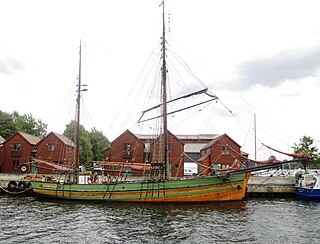
Anna Kristina is a Norwegian-flagged, galeas-rigged Hardangerjakt. Originally named Dyrafjeld, the sloop-rigged vessel was built on a Norwegian farm in 1889. The ship's early career was as a cargo ship in the Hardanger region, with occasional voyages as far afield as Russia. She was sold to new owners and rerigged as a galeas in the late 1920s. The sails were removed during World War II, but continued in merchant service until the mid-1970s. After a series of accidents, the vessel was laid up, then sold to new owners, who restored the vessel and renamed her Anna Kristina. Charter work occurred throughout the 1980s, including involvement in the First Fleet Re-enactment Voyage.
Peter Stanley is a prominent Australian military historian, who specialises in the military-social experience of war in the late nineteenth and first half of the twentieth centuries. In a career spanning more than four decades, Stanley has worked as an historian and later head of the Military History Section at the Australian War Memorial (1980–2007), head of the Centre for Historical Research at the National Museum of Australia (2007–13) and, since 2013, as Research Professor at the University of New South Wales in the Australian Centre for the Study of Armed Conflict and Society. Beginning in 1977—and as at 2023—Stanley has written 29 books and edited eight others, published four novels and co-authored a booklet, and contributed at least 49 chapters in books and anthologies, 59 journal articles, seven encyclopaedia entries and numerous papers. In 2011, his book Bad Characters: Sex, Crime, Mutiny, Murder and the Australian Imperial Force (2010) was the joint winner of the Prime Minister's Prize for Australian History.

Daniel Reynaud is an Australian historian whose work on Australian war cinema and on Australian World War I soldiers and religion has challenged aspects of the Anzac legend, Australia’s most important national mythology built around the role of Australian servicemen, popularly known as Anzacs
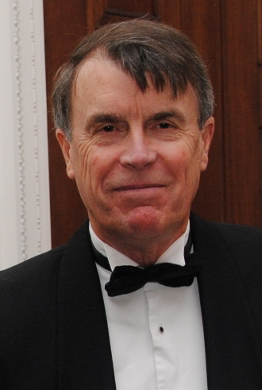
Ian Callum McGibbon is a New Zealand historian, specialising in military and political history of the 20th century. He has published several books on New Zealand participation in the First and Second World Wars.

The Gallipoli Peninsula Historical Site covers over 33,000 hectares in Gallipoli, Turkey. The park was established in 1973 by the Turkish government and is included in the United Nations list of National Parks and Protected Areas. Gallipoli Peninsula Historical Site is home to memorials, graveyards, and commemorations of events that took place on the peninsula since the First World War.
References
- ↑ Australian Democrat Candidates – Federal Election 1990
- ↑ "Author Jonathan King aims to remember fallen diggers", Lydia Sawtell, Melbourne Leader, 11 November 2011
- 1 2 Green, Antony. "Mackellar". 2013 Australian Federal Election. Australian Broadcasting Corporation.
- ↑ "First Fleet Re-enactment Company records, 1978–1990". State Library New South Wales. Retrieved 29 April 2018.
- ↑ Johnston, Martin (19 January 2003). "Apology absurd for 'invasion'". The New Zealand Herald. Retrieved 29 April 2018.
- ↑ Crawford, John; McGibbon, Ian (2007). New Zealand's Great War: New Zealand, the Allies, and the First World War. Auckland: Exisle Publishing. ISBN 978-1927147344.
- ↑ "Correction and apology". The Sydney Morning Herald. 27 April 2018. Retrieved 29 April 2018.
- ↑ "Dr Jonathan Leslie King". It's an Honour. Retrieved 12 June 2022.
- ↑ Lachlan Hastings, "Great Moments in Australian History", Weekly Times, 24 March 2010
- ↑ Jobbins, Lachlan. Great Moments in Australian History [Book Review] [online]. Bookseller + Publisher Magazine, Vol. 89, No. 4, Nov 2009: 39.
- ↑ Michael E. Daniel, "Book review: From Vinegar Hill to the mountains of Afghanistan", News Weekly (Australia), 17 March 2012
- ↑ Christopher Bantick, "Review: Great Battles in Australian History", Weekly Times (Australia), 25 April 2012